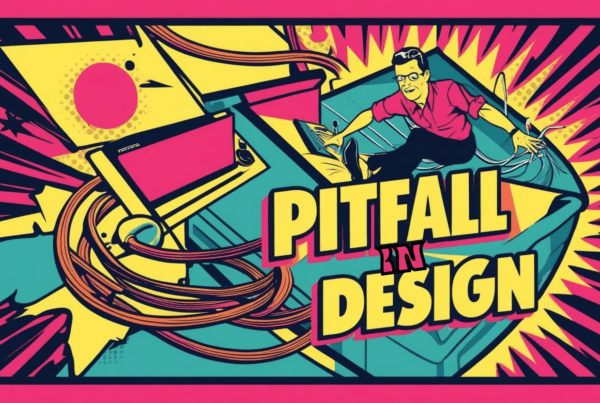Futurology for Intranets???
Our society is a complex and multifaceted living organism that needs a huge variety of directions and approaches to its research. One of these directions is futurology or futures studies, which focuses on the prospects for the historical development of society and forecasting its conditions in the future. Each intranet is a small universe, a separate society with its own laws and logic of development. To ensure the high-quality existence of the intranet, high-quality and complex forecasting is necessary, which will allow you to spend a minimum of effort with a maximum result in the future. Therefore, the futurological approach for the intranet sphere will focus on performing complex theoretical and analytical work with the use of empirical data to form a strategy for the development of the intranet project and predict future states (namely, the level of satisfaction with the intranet and interest in its existence) of your society of users of this same intranet.

Benefits to employ futurology
- Your intranet does not spend too much money
- You dare to say “no” to a new, unplanned (and very ill-timed) development
- Your users are not suffering Toffler’s future shock (when there are too many changes in too short a time)
- Intranet budgets are easier to defend
- You are not stressed by unexpectedly reddish performance indicators and pivots in the middle of the financial year
There are many such reasons, and you will definitely see them when you start planning an intranet development strategy not only based on direct requests from users. Moreover, futures studies have a massive set of pretty useful methods that fit intranet planning strategy surprisingly well.
According to Sohail Inayatullah’s article “Futures Studies. Theories and Methods“, there are several horizons that can be used to describe different periods of time (0-5 years, 5-20 years, 20-30 years), which can be used to make predictions. Futurologists often limit their predictions to more or less short periods of time, because the modern world changes very quickly, it is a living organism that can develop and modify very quickly. Community managers have a similar obstacle, so they cannot be sure of results when planning for a very long period of time. Therefore, it is better to segment goals by time periods.
In the first month of the intranet’s existence, it is better to monitor every week and plan for no more than a month. In the first year after the intranet launch, it is better to plan for a month or a quarter. Then, you can already plan for a year, adding the development of long-term goals for 3-5 years. In this way, it will be easier for you to predict changes in the life of your company and to respond more quickly to problems that may arise on the intranet.
As in futures studies, there is always an element of surprise in the form of a certain curve of progress, so a community manager should be aware of the rapid development of information technologies in tandem with human studies. Now, the rapid progress reminds a race, including a race of fields of human activity for spheres of influence. Here, the IT industry is a battlefield of platforms, where different companies compete for the opportunity to be the best in the quality of creating the most positive user experience. You, as a community manager, cannot know everything, and, logically, there is a huge probability that the strategy (and with it the platform) you have chosen will at some point in time lose its primacy in meeting the new requirements of the business community.
How to be 100% sure in your Intranet Strategy?
- You always have options. Here, we advise following futures studies scientists’ tools and work through a list of possible alternative future scenarios for your intranet. These scenarios should include the probable emergence of megatrends, trends, and weak signals. You should be prepared for the possible scenario of changing the platform on which your intranet is based. To put it very roughly, you have two main paths: to be true to your goal of saving the company’s money or to be true to your goal of creating a beloved intranet. In principle, both these strategies have the right to be and can be long-lived. We will consider the support of the viability of such strategies below.
- Let the community administration be a team, not one person. Even if it looks like you have a small and functionally simple intranet, you are not able to cover all corners of your little universe, especially people’s thoughts. That is why you need a team.
- Successful planning is possible when there is a certain base of empirical data that is competently combined with analytical work. Do not neglect even the most basic statistics. It will be your argument in defense of your strategy.
- Analyze what competitors have. This effort will be significant when working on megatrends, trends, and weak signals. Your intranet is a product that needs to be constantly sold. What’s more, you need to sell it to several categories of people at once: the top managers who will allocate the budget; the sales department; your users; the intranet awards committee; the company that created your platform (this can get you a good discount on the platform itself or additional services). That is why you should know how others work.
- Stay informed about the life of your company. Even if you devote 100% of your working time to your intranet, you should still know what projects your company develops and how the company lives. This is necessary to plan the development budget for your intranet and to successfully defend this budget by demonstrating the value of these developments. How can you plan for the next year of your intranet life if you have no idea what’s going on with your colleagues? That’s right, no way 🙂

Let’s talk about the two paths of the intranet samurai, which a community manager is. As we said before, you have two main paths: to be true to your project of saving the company money or to be true to your project of a successful intranet.
The strategy of a money-saving intranet
Even if this way is about the ROI-first approach, one should remember that there is a difference between being reasonable about spending money and not spending money at all. The scenario method can help you with spending less money on the whole project of the intranet development over the years. Also, the cross-impact analysis methodology may be helpful. This methodology is about analyzing how relationships between current events would impact resulting events and reduce uncertainty in the future (more details are here). If applying this to our topic, it would mean that you can analyze how the level of users’ appreciation of the current functionality can impact the probability of the level of satisfaction with new custom functionality. There are a lot of ways to analyze the relationship between different events in your community, and all of these ways will help to reduce money waste.

- Your intranet exists to save the company’s money by optimizing the communication of employees. It means that the financial side and the budget determine the development of your intranet project. This principle puts the budget and, with it, the technical component (platform and development) in the foreground. Of course, we are not talking about neglecting the interests of users and the image of the HR brand. It’s just that this way involves strict financial limitations on the intranet development. This way means that changing the platform and creating complex and expensive custom functionality will be planned well in advance of their implementation. Perhaps even, the platform switch won’t be not planned until the moment of such necessity. For example, when your platform will be eliminated, and you will have no other options than to move to another one. The above does not mean that you cannot win an award or win the love of your users. It’s just that your intranet will be more local and cozy than luxurious, to put it simply. Another benefit of this way of development is that it is safe. You take almost no risk as you follow a proven path with the minimum necessary functionality so that your users spend less time on routine communications and searching for documents on the network.
- The life of any custom development can be long with the right approach. The principle is that since massive custom functionality items are expensive, you can’t afford constantly create new ones and destroy old ones. Instead, regularly optimize and refresh legacy development elements. It will cost you much less, and the costs will be spread over financial years, allowing you to spend less at a time. Also, old developments can be reviewed and adapted to new projects by slightly modifying the code and development settings. It is better to carefully consider new functionality development based on the results of trend analysis over the past 5 years, and the study of megatrends, trends, and weak signals. A development will live longer if it is relevant for a long time. Don’t hesitate to ask your development team how you can save money by using existing custom developments. If you have a lot of old projects that you would like to revive, write to us and we will audit your intranet and help make it interesting for your users again!
- When choosing a way to save the company’s money, your right to fail is significantly reduced, because every failure is about lost finances. The method of Failure mode and effects analysis that futures studies scientists often use will help to follow this principle. So when planning a budget, pay additional attention to analyzing potential failures and consequences with all your projects for this budget. Paying attention to the previous failed projects will also be very useful.
- High-quality educational materials in various formats are our everything. By spending time on creating a set of instructions, you will save not only your own time for user training but also your nerves, and the project budget for development. The community manager should always remember that a user who does not know the functionality is a dissatisfied user. Criticism of the platform, functionality and even the existential horror of having to go to that intranet to find some document there will come into play here. Users realize the value and benefits of an intranet only when they understand this intranet. User experience is a crucial heartless creature that can glorify or destroy your intranet. At some point, any platform or any development is new and unclear. Your task as the most advanced user in the community is to help other users get to know it better. Different formats of the training materials will make it work even better. Everything will work: documents, videos, images, tables, onboarding widgets, gamification with quests and puzzles, prizes, etc.
The strategy of a beloved intranet

We suggest applying the civilizational approach here. It puts the subject of the historical process at the center, focusing on the factors related to their activities. If we talk about such an approach in our field, then, in planning the intranet development strategy, one should rely on the subjects of the community itself, on their activities, intentions, needs, and desires. It means that you need to put users at the center of the intranet itself, to consider the users’ needs as the essence of the intranet itself. We want to note that this approach will be in hand for both ways of developing an intranet project because it thinks about people, which is always a good idea 🙂
If you follow the path of the project of a beloved intranet, then you need to rely on the following principles:
- Your HR brand and users rule the roost. This principle puts the budget and the technical component (platform and custom development) in second place. It means that, when planning, you should first consider the interests of the HR brand and users, even if it affects the budget of the intranet project. What can it give you? Well, the most important thing is the love of users. The second is winning all kinds of prestigious awards for intranets and HR brands. The next principle follows from this.
- If the technical component is not the main thing, then you need to be ready to say goodbye to it at a certain point. It can be both a separate custom functionality in the intranet and the entire platform. How to understand in time that you need to change the platform? Monitor the life of the platform as a product. Attend seminars and workshops about the platform. Read the release notes. Monitor the quality of support. If the quality of support got worse, it means that the company that owns the platform might have allocated less budget to the development of the platform as a product. It will also be useful to follow the migration of the company’s management. If the management leaves en masse, it makes sense to pay attention to the company’s plans to support the platform.
- Formal intranet success rates should be high. We are talking about user engagement statistics. Here, the option of a realistic activity scenario will not work. Your community has to be on top and have high user engagement numbers. Benchmarks that the company owner of your platform may publish based on the performance data of their customers will help you understand what numbers can be considered high.
- Vanguard is your middle name. Monitor IT innovations regularly. At first glance, they may not seem directly related to the field of the digital workplace. Perhaps your company will be the first to use a new development to improve the working process of your employees. By the way, monitoring (a.k.a. media monitoring service) is a popular foresight tool among futurists.
By following these principles, it will be easier for you to defend your intranet project and its budget. You will be clearly aware of your goals and priorities, without paying too much attention to the secondary factors.
In general, being totally focused on your intranet bubble can be harmful, because at some point you may just not notice it start to die. Always look around and engage in new methods and practices to improve the life of your little universe. And everything will be fine!







